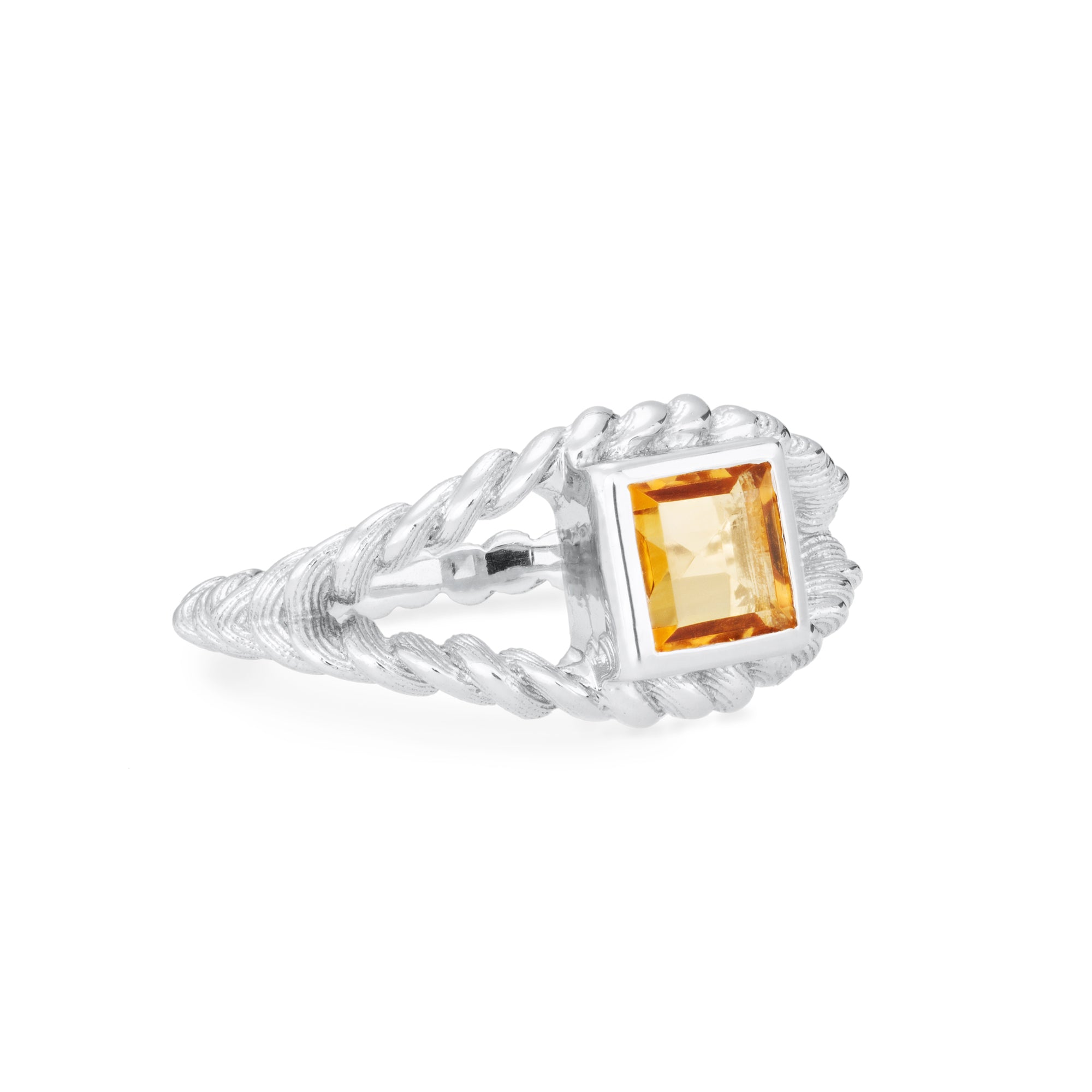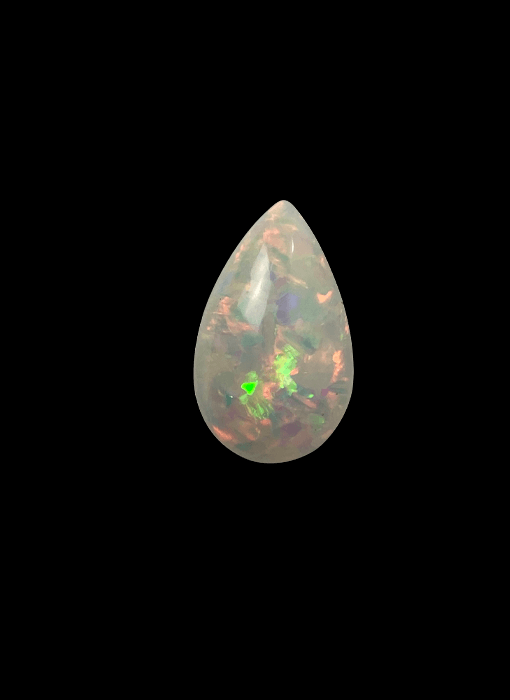
Gemstones Guide
INTRODUCTION
Embark on a Gemstone Journey: Unveiling the Secrets of Nature's Treasures
From the depths of the earth to the heart of the fire, gemstones have captivated humanity for centuries, their radiant colours and captivating allure weaving tales of beauty, power, and symbolism. Adorned in jewellery, these precious stones transform into tangible expressions of love, friendship, and remembrance, each piece bearing a unique story waiting to be unearthed.
Step into the realm of gemstones, where every gem holds a hidden essence, whispering secrets of the universe. Our gemstone guide is your compass, guiding you through the enchanting world of these natural wonders, empowering you to select the perfect stone for yourself or a loved ones.
Gemstones are not merely adornments; they are embodiments of nature's artistry, each with its own unique personality and symbolic meaning. Whether you seek the fiery intensity of rubies, the serene tranquillity of sapphires, or the captivating mystique of emeralds, our gemstone guide will unravel the secrets hidden beneath their surfaces.
Our gemstone guide is not just a collection of facts and figures; it is a personalised journey tailored to your individual preferences and the recipient's personality

01 / 04
Diamonds
Diamonds are the hardest natural substances known to man, ranking 10 on the Mohs scale of hardness. This means that they are scratch-resistant and can be only cut by another diamond.
Diamonds are formed over billions of years deep within the Earth’s mantle, where intense heat and pressure cause carbon atoms to rearrange themselves into the crystalline structure of diamond.
02 / 04
Diamonds
Diamonds can be colourless, yellow, brown, pink, blue, green, red, orange, and black. The colour of a diamond is determined by the presence of impurities in the crystal structure.
The clarity of a diamond refers to the absence of inclusions, or imperfections, in the crystal. Flawless diamonds are extremely rare and highly prized.
The cut of a diamond is the way in which it is shaped and polished. A well-cut diamond will reflect light in a way that maximises its brilliance and fire.
03 / 04
Diamonds
Diamonds are often associated with love, eternity, and purity. They are traditionally given as engagement rings and are a popular choice for other jewellery pieces as well.
Diamonds have been valued for centuries for their beauty and rarity. They have been used in jewellery and other decorative arts for thousands of years.
04 / 04
Diamonds
The diamond industry has been criticised for its environmental impact. There are a number of initiatives to promote the ethical sourcing of diamonds. These initiatives aim to ensure that diamonds are mined and traded in a way that does not harm the environment or the people involved in the process.
Diamonds are a fascinating and valuable gemstone that has been cherished for centuries. They are a symbol of love, luxury, and eternity.

01 / 03
Emerald: The Gem of Nature's Heart
Emeralds, the embodiment of nature's vibrant green hue, have captivated hearts and adorned royalty for centuries. Their mesmerising beauty, ranging from delicate pastel greens to deep, mesmerising emerald tones, has made them one of the most prized gemstones on the planet.
02 / 03
Distinctive Characteristics
Emeralds are members of the beryl family, sharing their chemical composition with aquamarines and heliodor. However, it's the trace amounts of chromium and vanadium that imbue emeralds with their signature green colour.
03 / 03
Emerald Myths and Legends
Emeralds have been associated with various myths and legends throughout history. Ancient Egyptians believed emeralds to possess magical powers, protecting their wearers from evil and bringing prosperity. Emeralds were also associated with love and fidelity in some cultures.

01 / 03
Ruby: The Fire of Passion
Rubies, the embodiment of fiery passion and eternal love, have captured the hearts of royalty, poets, and ordinary people for centuries. Their mesmerising red hue, ranging from delicate pinks to deep, saturated crimsons, has made them one of the most sought-after gemstones in the world.
02 / 03
Distinctive Characteristics
Rubies are a variety of the mineral corundum, the same mineral that gives sapphires their blue colour. However, in rubies, the presence of chromium impurities imparts a vibrant red colour, making them the most precious gemstones after diamonds. Rubies are second only to diamonds in hardness, ranking 9 on the Mohs scale, making them remarkably durable and resistant to scratches.
03 / 03
Ruby Myths and Legends
Rubies have been associated with various myths and legends throughout history. Ancient cultures believed rubies possessed mystical powers, protecting their wearers from evil and promoting love and prosperity. Rubies were also said to embody courage and strength.

01 / 03
Sapphire: A Spectrum of Splendour
Sapphires, the embodiment of royalty, love, and loyalty, have captivated hearts and adorned jewellery for centuries. Their mesmerising beauty, ranging from deep royal blue to a kaleidoscope of other hues, has made them one of the most sought-after gemstones in the world.
02 / 03
Distinctive Characteristics
Sapphires are a variety of the mineral corundum, the same mineral that gives rubies their red colour. However, in sapphires, the presence of trace amounts of iron, titanium, or chromium impurities imparts a variety of colours, including blue, pink, yellow, orange, green, purple, and even colourless. They are incredibly hard, ranking 9 on the Mohs scale, making them second only to diamonds in durability.
03 / 03
Sapphires Myths and Legends
Sapphires have been associated with various myths and legends throughout history. Ancient Egyptians believed sapphires possessed mystical powers, protecting their wearers from evil and promoting wisdom. Sapphires were also said to embody peace, loyalty, and truth.

01 / 05
Pearl: Nature's Treasure
Pearls, the exquisite jewels formed within living oysters and mussels, have captivated hearts and adorned jewellery for centuries. Their captivating beauty, ranging from delicate cream to radiant rainbow hues, has made them one of the most prized gemstones in the world.
02 / 05
Unique Origin
Unlike other gemstones that are mined from the Earth's crust, pearls are the only gemstones that are formed within a living organism. An oyster or mussel, when a foreign object, such as a grain of sand or a parasite, enters its shell, responds by layering it with layers of nacre, a pearlescent material that gives pearls their unique radiance and iridescence.
03 / 05
Distinctive Characteristics
Pearls are categorised into two main types: natural and cultured. Natural pearls are formed completely by nature, while cultured pearls are intentionally grown in oysters or mussels by inserting a bead or irritant into the shell.
04 / 05
Distinctive Characteristics
- Natural Pearls: Natural pearls are incredibly rare and highly prized due to their unique and unpredictable beauty. They are often irregular in shape and may have imperfections.
- Cultured Pearls: Cultured pearls are more abundant and affordable than natural pearls. They are grown under controlled conditions in oyster farms, ensuring consistent quality and size.
05 / 05
Pearl Myths and Legends
Pearls have been associated with various myths and legends throughout history. Ancient Egyptians believed pearls symbolise purity and fertility, while Romans believed they held medicinal properties. In some cultures, pearls were also considered to bring good luck and ward off evil spirits.
Factors Influencing Value
The value of a pearl hinges on several factors:
Shape
Symmetrical, round pearls are the most valuable, while baroque pearls, which have irregular shapes, are considered unique and collectible.
Luminescence
A high-luminescence pearl reflects and refracts light brilliantly, creating a shimmering effect.
Colour
Cream-coloured pearls are the most traditional and popular, but pearls can also be found in a wide range of colours, including white, pink, yellow, lavender, and even black.
Size
Larger pearls are generally more valuable, but size alone does not guarantee high value. The quality of the pearl's luminescence, colour, and shape also plays a significant role in determining its worth.

01 / 05
Amethyst: A Glimpse of Serenity
Amethyst, the captivating violet gemstone, has long been revered for its beauty, symbolism, and purported healing properties. Its name derives from the Greek word 'amethystos', meaning 'not drunken', alluding to its association with sobriety and clarity of mind.
02 / 05
Distinctive Characteristics
Amethysts are varieties of the mineral quartz, known for their deep violet hue, ranging from delicate lilac to rich, royal purple. These vibrant shades are attributed to the presence of iron impurities within the crystal structure.
03 / 05
Formation and Geological Origins
Amethysts typically form in hydrothermal veins, where hot mineral-laden fluids circulate through cracks and fissures in the Earth's crust. These veins often contain quartz, the parent mineral of amethysts, which is then infused with iron to produce the characteristic violet colour.
04 / 05
Cultural Significance and Symbolism
Amethysts have been associated with various cultures and traditions throughout history. In ancient Greece, they were believed to ward off intoxication and promote sobriety, hence their name. In Roman times, amethysts were considered symbols of courage and strength.
In mediaeval times, amethysts were thought to enhance memory and promote wisdom. They were also believed to protect against nightmares and provide spiritual insight.
05 / 05
Amethyst: A Timeless Treasure
Amethysts have captivated the hearts of jewellery enthusiasts for centuries. Their captivating beauty, deep symbolism, and purported healing properties make them a cherished gemstone choice. Whether adorned as jewellery or displayed as standalone gems, amethysts exude an ethereal elegance that continues to inspire and fascinate.

01 / 05
Citrine: The Warmth of Sunshine
Citrine, the radiant yellow gemstone, has long been admired for its cheerful hue and its purported association with prosperity and success. Its name derives from the French word "citron," meaning "lemon," reflecting its resemblance to the colour of a lemon peel.
02 / 05
Distinctive Characteristics
Citrines are varieties of quartz, known for their warm yellow to brownish orange hue. These vibrant shades are attributed to the presence of iron impurities within the crystal structure.
03 / 05
Formation and Geological Origins
Citrines typically form hydrothermally, where hot mineral-laden fluids circulate through cracks and fissures in the Earth's crust. These fluids often contain quartz, the parent mineral of citrines, which is then infused with iron to produce the characteristic yellow-orange colour.
04 / 05
Cultural Significance and Symbolism
Citrines have been associated with various cultures and traditions throughout history. In ancient Greece, citrines were believed to attract wealth and prosperity. In mediaeval times, they were also considered symbols of creativity and energy.
In some cultures, citrines were also thought to enhance mental clarity and improve decision-making. They were also believed to protect against negative energies and promote positive thoughts.
05 / 05
Citrine: A Radiant Treasure
Citrines have captivated the hearts of jewellery enthusiasts for centuries. Their warm, cheerful hue, their purported connection to prosperity, and their versatility in various jewellery settings make them a cherished gemstone choice. Whether adorned as jewellery or displayed as standalone gems, citrines radiate elegance and warmth, bringing a touch of sunshine to any occasion.

01 / 06
Lemon Quartz
Lemon quartz, a variety of quartz, has captivated hearts with its vibrant yellow hue, reminiscent of the sunshine it's named after. This gemstone is known for its cheerful energy and purported connection to vitality and happiness.
02 / 06
Distinctive Characteristics
Lemon quartz is a relatively rare variety of quartz, characterised by its intense yellow colour, ranging from lemon yellow to a deeper golden hue. This unique colour is attributed to the presence of iron impurities within the crystal structure.
03 / 06
Formation and Geological Origins
Lemon quartz typically forms in hydrothermal veins, where hot mineral-laden fluids circulate through cracks and fissures in the Earth's crust. These fluids often contain quartz, the parent mineral of lemon quartzes, which is then infused with iron to produce the characteristic yellow-orange colour.
04 / 06
Cultural Significance and Symbolism
Lemon quartz has been associated with various cultures and traditions throughout history. In ancient Greece, lemon quartz was believed to promote happiness, joy, and vitality. In mediaeval times, it was also considered a symbol of protection from negative energies and for bringing good luck.
In some cultures, lemon quartz was also thought to enhance mental clarity, improve decision-making, and boost energy levels. It was also believed to promote harmony and balance in one's life.
05 / 06
Fine Jewellery Applications
Lemon quartz finds a prominent place in fine jewellery, adding a splash of sunshine to earrings, necklaces, bracelets, and pendants. Its versatility allows for various cutting styles, from classic round cuts to elegant pear or marquise cuts.
06 / 06
Lemon Quartz: A Treasure of Sunshine
Lemon quartz has captivated the hearts of jewellery enthusiasts for centuries, offering a burst of sunshine in their creations. Its vibrant colour, purported connection to positivity, and versatility in fine jewellery settings make it a cherished gemstone choice. Whether adorned as jewellery or displayed as standalone gems, lemon quartz radiates elegance, happiness, and a touch of summertime warmth.

01 / 05
Topaz: A Spectrum of Splendour
Topaz, the captivating gemstone known for its rainbow hues, has long been admired for its beauty and versatility. Its name derives from the Greek word "topazios," meaning "fire," referencing its fiery brilliance and the range of colours it can exhibit.
02 / 05
Distinctive Characteristics
Topaz is a variety of quartz, known for its wide spectrum of colours, ranging from pale yellow to rich orange, deep blue, and even pink or purple. These vibrant shades are attributed to the presence of trace elements, such as iron, chromium, or fluorine, within the crystal structure.
03 / 05
Formation and Geological Origins
Topaz typically forms in hydrothermal vents, where hot mineral-laden fluids circulate through cracks and fissures in the Earth's crust. These fluids often contain quartz, the parent mineral of topazes, which is then infused with these trace elements to produce the characteristic range of colours.
04 / 05
Cultural Significance and Symbolism
Topaz has been associated with various cultures and traditions throughout history. In ancient Greece, topaz was believed to promote love, happiness, and fidelity. In mediaeval times, it was also considered a symbol of protection from evil spirits and for bringing good luck.
In some cultures, topaz was also thought to enhance mental clarity, improve communication skills, and boost energy levels. It was also believed to promote truthfulness and inspire personal growth.
05 / 05
Topaz: A Timeless Treasure
Topaz has captivated the hearts of jewellery enthusiasts for centuries, offering a spectrum of splendour in their creations. Its versatile range of colours, its purported connection to love, happiness, and positivity, and its versatility in fine jewellery settings make it a cherished gemstone choice. Whether adorned as jewellery or displayed as standalone gems, topaz radiates elegance, vibrancy, and the enduring beauty of nature's artistry.

01 / 04
Opal: A Play of Colors and Dreams
Opal, the mesmerising gemstone renowned for its play of colours, has long captivated hearts with its ethereal beauty and purported connection to dreams and imagination. Its name derives from the Latin word "opalus," meaning "precious stone."
02 / 04
Distinctive Characteristics
Opals are varieties of quartz that exhibit an iridescent play of colours, ranging from delicate pastel hues to vibrant rainbows. This mesmerising effect is caused by the diffraction and interference of light within the stone's structure.
03 / 04
Formation and Geological Origins
Opals typically form in volcanic environments, where silica-rich solutions percolate through cracks and fissures in rocks. These solutions deposit silica in the form of tiny spheres, which eventually coalesce into opaline structures.
04 / 04
Cultural Significance and Symbolism
Opals have been associated with various cultures and traditions throughout history. In ancient Greece, opals were believed to promote creativity, inspiration, and the ability to see into the future. In mediaeval times, they were also considered a symbol of protection from nightmares and for bringing good luck.
In some cultures, opals were also thought to enhance empathy, promote emotional balance, and boost intuition. They were also believed to foster love and harmony in relationships.
Type of Gemstone Shape


Round


Asscher


Emerald


Oval


Marquise


Pear


Radiant


Princess


Heart
Stone Setting Styles


Basket


Peg Head


Decorative


Ilusion


Bright-Cut


Bridge Accent


Bar / Channel


Channel


Trellis


Bezel


Half-Bezel

Our Services
Bespoke Jewellery
We offer a bespoke fine jewellery process to create a unique and personal piece of jewellery that is tailored to your specific needs and budget.
Book your FREE 15 minutes discovery call below:



